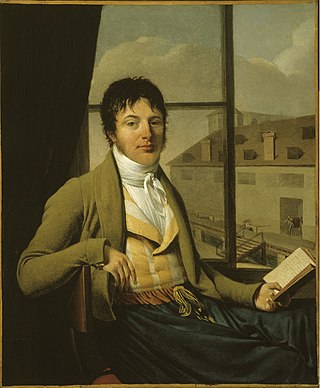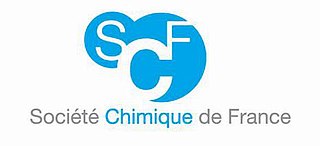
Jean-Antoine Chaptal, comte de Chanteloup was a French chemist, physician, agronomist, industrialist, statesman, educator and philanthropist. His multifaceted career unfolded during one of the most brilliant periods in French science. In chemistry it was the time of Antoine Lavoisier, Claude-Louis Berthollet, Louis Guyton de Morveau, Antoine-François Fourcroy and Joseph Gay-Lussac. Chaptal made his way into this elite company in Paris beginning in the 1780s, and established his credentials as a serious scientist most definitely with the publication of his first major scientific treatise, the Ėléments de chimie. His treatise brought the term "nitrogen" into the revolutionary new chemical nomenclature developed by Lavoisier. By 1795, at the newly established École Polytechnique in Paris, Chaptal shared the teaching of courses in pure and applied chemistry with Claude-Louis Berthollet, the doyen of the science. In 1798, Chaptal was elected a member of the prestigious Chemistry Section of the Institut de France. He became president of the section in 1802 soon after Napoleon appointed him Minister of Interior. Chaptal was a key figure in the early industrialization in France under Napoleon and during the Bourbon Restoration. He was a founder and first president in 1801 of the important Society for the Encouragement of National Industry and a key organizer of industrial expositions held in Paris in 1801 and subsequent years. He compiled a valuable study, De l'industrie française (1819), surveying the condition and needs of French industry in the early 1800s.

Ferdinand Jules Quénisset (1872–1951) was a French astronomer who specialized in astrophotography.

Sorbonne Paris North University is a public university based in Paris, France. It is one of the thirteen universities that succeeded the University of Paris in 1968. It is a multidisciplinary university located in north of Paris, in the municipalities of Villetaneuse, Saint-Denis, La Plaine Saint-Denis, Bobigny and Argenteuil.

The École européenne de chimie, polymères et matériaux of Strasbourg is a public engineering school in the city of Strasbourg, in Alsace, France. It was founded in 1948, and is located on the Cronenbourg Campus of the University of Strasbourg. Each year 90 students graduate from the school with a diplôme d'ingénieur. It is a National School of Engineers, part of the University of Strasbourg and a member of the Fédération Gay-Lussac, which recruits from the common polytechnic entrance examination. It is also part of the Alsace Tech network of nine engineering schools in Alsace. The ECPM offers its students three specialties: chemistry, polymers or materials.
ParisTech is a cluster that brings together 7 renowned grandes écoles based in Paris, France. It covers the whole spectrum of science, technology and management and has more than 12.000 students.

The Bulletin de la Société Chimique de France was a French peer-reviewed scientific journal on chemistry published by the Société Chimique de France. It was established in 1858 under the title Bulletin de la Société Chimique de Paris, under which additional name it appeared until the end of series 3.

Gustave-Auguste Ferrié was a French radio pioneer and army general.

Chimie ParisTech, founded in 1896 within the University of Paris, is an engineering school and a constituent college of PSL Research University specialised in chemical science. It is located in the 5th arrondissement of Paris.

The Société astronomique de France, the French astronomical society, is a non-profit association in the public interest organized under French law. Founded by astronomer Camille Flammarion in 1887, its purpose is to promote the development and practice of astronomy.

The Société Chimique de France (SCF) is a learned society and professional association founded in 1857 to represent the interests of French chemists in a variety of ways in local, national and international contexts. Until 2009 the organization was known as the Société Française de Chimie.

Gabriel François Venel was a French chemist, physician and a contributor to the Encyclopédie,.

The Friends of the Natural History Museum is a French non-profit organisation, created in 1907 and recognized as a charity in 1926. Its purpose is to give practical and financial support to the Muséum national d’Histoire naturelle in Paris, France, enrich its collections, zoo, laboratories, greenhouses, gardens and libraries, and to promote scientific research and education related to it.

François Charles Léon Moureu was a French organic chemist and pharmacist. In 1902 Charles Moureu published Notions fondamentales de chimie organique, translated into English as Fundamental principles of organic chemistry (1921).
The Société de Chimie Industrielle is an independent learned society inspired by the creation of the Société de Chimie Industrielle in Paris in 1917. The American Section was formed on January 18, 1918, and held its first meeting on April 4, 1918.

Alfred Henri Aftalion, better known as Fred Aftalion, was a French chemical engineer who held leadership positions in the French chemical industry for three decades. He also served as Vice-President of ALEPS, the Association pour la Liberté Economique et le Progrès Social . He wrote and commented on economics and politics from a viewpoint of economic liberalism via ALEPS and Radio Courtoisie.
Denis Albert Bardou was a French manufacturer of precision optical instruments.
Raymond Augustin Jean-Baptiste Mailhat was a French manufacturer of telescopes and precision optical instruments.

The Observatory of the rue Serpente was an astronomical observatory owned and operated by the Société Astronomique de France in the historic Latin Quarter of Paris. It operated between 1890 until 1968, when it was transferred to a new location at the nearby Astronomy Tower of the Sorbonne.














